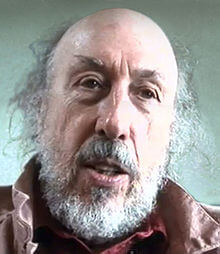Just what is it that makes today’s homes so different, so appealing? was created in 1956 for the catalogue of the exhibition This Is Tomorrow in London, (August 9‚ÄìSeptember 9) featuring principally the interdisciplinary ICA Independent Group, including early examples of Pop Art. Originally it was reproduced in black and white; addition, the piece was used in posters for the exhibit. Hamilton and his friends John McHale and John Voelcker had collaborated to create the room that became the best-known part of the exhibition.
IN 1956 Britain switched on its first nuclear power station – Calder Hall
The 56 Group was founded, to promote modernist art in Wales. Subsequently renamed 56 Group Wales.
The biographical film Lust for Life with Kirk Douglas portraying Vincent van Gogh and Anthony Quinn as Paul Gauguin was released.
Le mystère Picasso, a French documentary film, showed Pablo Picasso in the act of creating paintings for the camera (which he subsequently destroys so that they will exist only on film).
Jim Ede settled at Kettle’s Yard, Cambridge, England.
Edward Seago joined a tour of the Antarctic.
Two attacks were made on Leonardo da Vinci’s Mona Lisa in the Louvre, Paris.
ARTWORKS CREATED IN 1956:
Laurence Bradshaw – Monument to Karl Marx at Highgate Cemetery, London (including bronze bust)
Alexander Calder – Red Mobile
Frank Cadogan Cowper – The Golden Bowl
Salvador Dalí – Living Still Life
Max Ernst ‚Äì L’oiseau Rose
Richard Hamilton ‚Äì Just What Is It that Makes Today’s Homes So Different, So Appealing? (collage)
Roy Lichtenstein – Ten Dollar Bill (lithograph)
L. S. Lowry – The Floating Bridge
Joan Mitchell ‚Äî Café
Norman Rockwell – The Scoutmaster
Cecile Walton, (b. 1891); Marie Laurencin, (b. 1883), Jackson Pollock, (b. 1912); Jean Metzinger, (b. 1883) and Nina Hamnett, (b. 1890) all died in 1956.

Painter, collagist and printmaker, born in London, who left school at fourteen, working as a jig and tool draughtsman, 1940-1945. He then worked in advertising, attending evening classes at St. Martin’s School of Art and Westminster School of Art. During this period Hamilton also worked in the Window Dressing department of the influential Reimann School in London’s Pimlico and furthered his studies at the RA Schools, 1938-1940, leaving to do war service as an engineering draughtsman. Returned to RA Schools in 1946 and was expelled, but continued his studies at Slade School 1948-51.